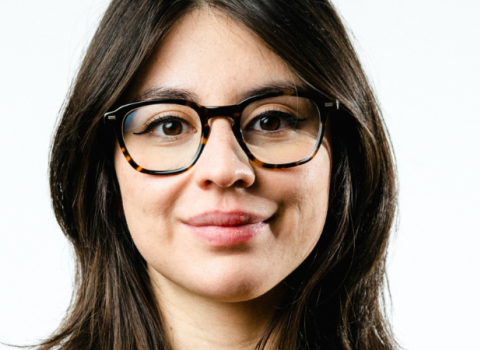
David Mott of Oxford Capital Partners
Buoyed by a rising European economy and strong global stock indexes, the European market for technology and bio funding was in recovery mode. At one end of the money chain, an unusually large crop of investment funds were launched in Britain, France, Germany, Belgium, Sweden and elsewhere to find tech winners - including in the high-risk, and chronically underfunded, early-stage market. At the other end of the money chain, EuroNext, London’s Alternative Investment Market and smaller markets around Europe saw a string of flotations.
“The market right now is quite buoyant,” says David Mott, investment director at Oxford Capital Partners, an investment management firm that, in announcing a new, £20 million British tech fund 24 November, was exemplifying the trend.
“There has been an influx of non-traditional investors into the venture space recently ñ hedge fund investing, quoted investment vehicles, and traditional quoted fund managers allocating some money to unquoted investments. As a result, there is money around for the best entrepreneurs,” said Mott.
Of course, some venture capitalists complain that all that new money is actually harmful ñ as so much of it is in the hands of hedge-fund managers focused on a quick profit rather than the more-patient, three to seven-year horizon of a traditional venture capitalist. Oxford University, for instance, scored a first with the announcement of a deal with a London hedge fund to help finance the exploitation of some of its inventions. But around Europe in 2006, there was also a rise in government funding for start-ups, in early-stage VC funds, in IPOs. The most unusual flotation was the £26 million entry to AIM in July of Imperial Innovations Group PLC, the former tech-transfer office of Imperial College London. It was the first time that individual investors have been able to bet on so broad a swath of technology at one top university (a predecessor was the 2002 flotation of much-smaller Biofusion PLC by the University of Sheffield.)
Certainly, the list of new funds is impressive. Just since 1 November, in Britain Amadeus Capital Partners and Cambridge Consultants each launched £10 million funds; in Belgium, Capricorn Venture Partners unveiled a £26 million cleantech fund; and Benchmark Capital Europe raised a mammoth 430 million. Of course, there’s government pump-priming behind some of this action: The European Investment Fund and the French government this year unveiled new programs to finance technology-transfer funds. Even the Russian government is now getting into the act, with plans for a $500 million fund to invest in local technology companies.
Fund Focus - Oxford Capital
On 24 November, Oxford Capital Partners announced its fourth technology fund, a £20 million bet on UK technology. And on 5 December, it made its first investment announcement for the fund: a stake in Orthomimetics Ltd., a spin-out in cartilage and ligament repair technologies from the Cambridge-MIT Institute. The fund is in many ways representative of the new European crop.
In what sectors is it investing?
Four ‘themes’ are planned, says David Mott, Investment Director:
1) Information and communications technology. “We’re particularly looking at opportunities focused on the convergence of technologies. There’s a lot of convergence in the mobile and software space, helping people view content on multiple devices in multiple places. While it’s interested in Web 2.0 companies, it prefers firms with new technologies to offer rather than media or content. We like to see some strong IP around the deals.”
2) Advanced technologies - such as materials science and homeland security. An example is nanotechnology, with various types of advanced or smart materials where the applications are wide-ranging.
3) Healthcare. The focus is on biomedical engineering - which requires less capital and provides a faster payback than bio-pharmaceutical companies that need long, expensive clinical trials before they can sell a pill. The regulatory paths are a little bit clearer, and there is intense M&A activity. “Our focus is on the exit strategy: We want to have a clear route to getting out.”
4) Sustainability engineering. This includes clean technologies, renewable energy, waste management, water purification and desalination.
What kinds of companies is it seeking?
Science and technology-based companies, in the UK (to take advantage of Britain’s Enterprise Incentive Scheme of tax breaks.) All stages of development are possible. “We look for the best opportunities, to back the best teams,” says Mott.
“Essentially, what we are looking for from an entrepreneur is to see a clearly thought-out strategy with a defensible proposition, which can either be a new product for a new market, or a new product for an existing market. They must have built a proposition that they will be able to defend against competition, with IP protection or special relationships with customers. And then we look for a strong core management team, which may not be complete but we can help them to complete it.
“What we do not look for is to back first-time entrepreneurs who are active in a market that they don’t have experience in, where a lot of the money we put in will be used to teach them lessons on how not to run a business.”
What’s the fund history?
Oxford Capital Partners was founded in 1999, an investment start-up. Its first fund, Mott says, returned 2.5 times to its investors. The latest fund is its fourth, and it has 26 companies in its portfolios. Typically, he says, it invests between £500,000 and £1 million initially, with a view to backing the winners as they progress. So far, he says, one company it invested in has failed, four have gone public, and three have been sold.
On the importance of repeat customers, Mott cites the words of a famous American business consultant of a few generations ago, W. Edwards Deming: “Profit in business comes from repeat customers, customers that boast about your product or service, and that bring friends with them.”
Positive spill-over from the bigger U.S. market was also a factor in the European revival. In the third quarter, American VC funding topped $6 billion for the third consecutive period, according to the U.S. VC industry’s regular MoneyTree report. In a sign of more to come, early-stage funding rose 10 per cent. And about 3 per cent of that money found its way directly to non-U.S. companies - chiefly in China, India and Israel.
No doubt too, that the initial public offering position in Europe has improved this year. This week venture capitalists could witness the cheery sight of an oversubscribed IPO, when Newron Pharmaceuticals joined the Swiss Exchange in Zurich, raising CHF118.12 million. The deal was two times oversubscribed and shares in the Milan-based company opened at 5 per cent above the IPO price.
A month earlier, two other companies went public. Cancer specialist Wilex AG grossed Euros 55.2 million, while Santhera SA came away with CHF88.5 million. In October, OctoPlus NV succeeded in joining EuroNext in Amsterdam, raising Euros 20 million.
Meanwhile the Alternative Investment Market in London continued to attract start up technology companies, not only from around Europe, but also from the US and China.
While for most venture capitalists the IPOs this year have not represented exits, there has been a steady increase in institutional investors appetite for companies coming to market, and with more money in the system, that appears to bode well for 2007.





 A unique international forum for public research organisations and companies to connect their external engagement with strategic interests around their R&D system.
A unique international forum for public research organisations and companies to connect their external engagement with strategic interests around their R&D system.